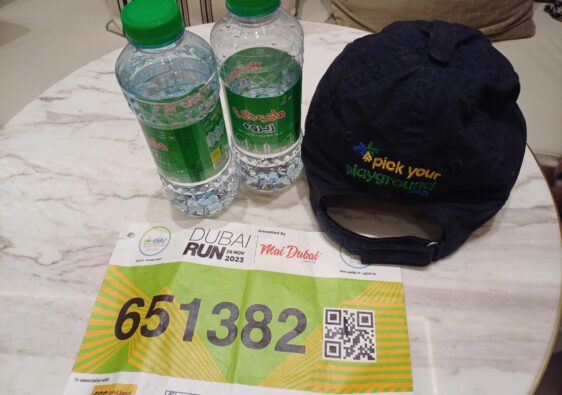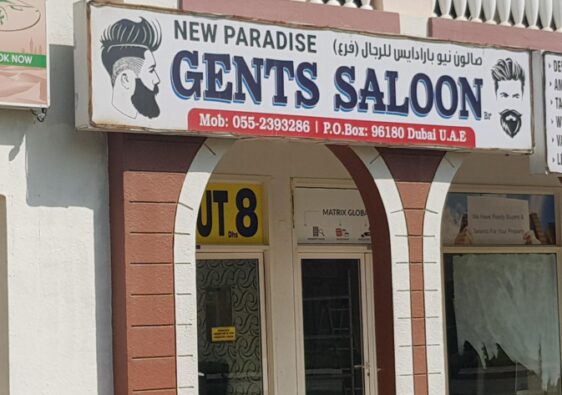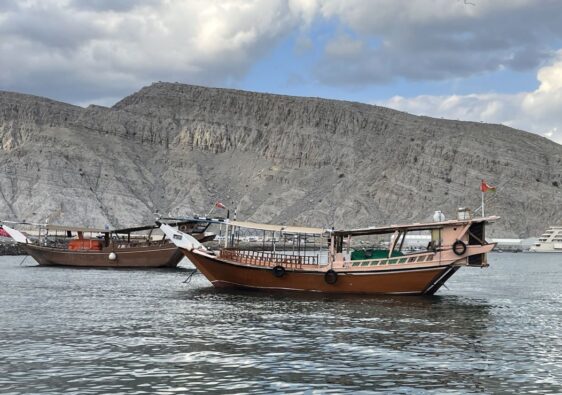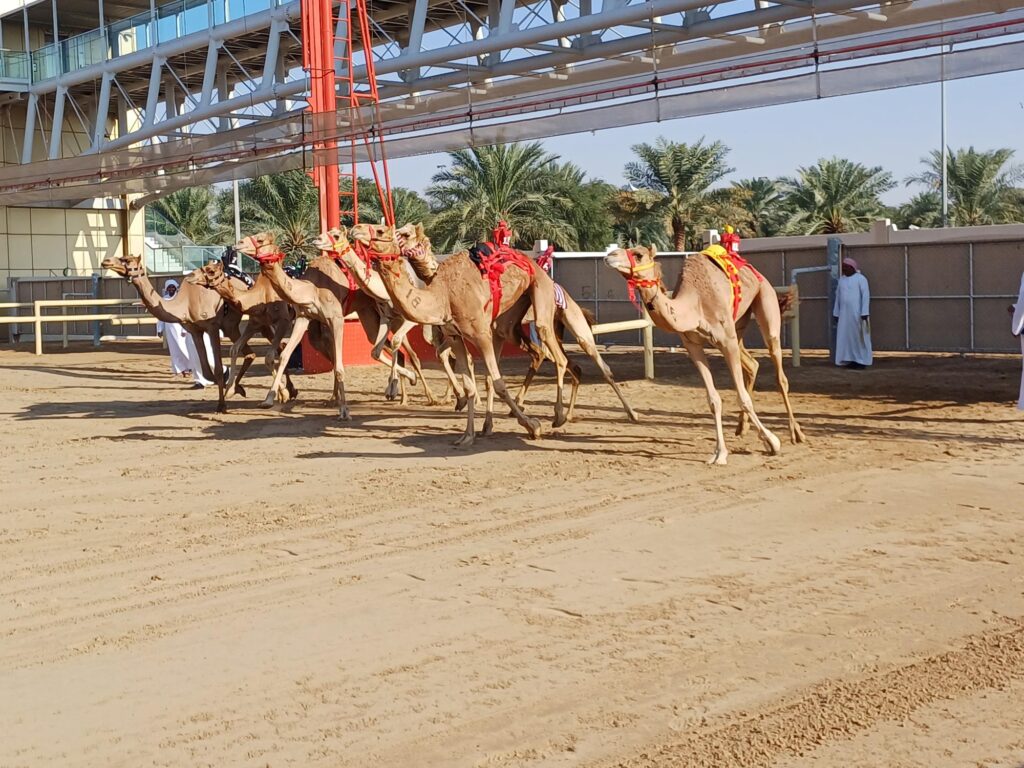
If you have a couple of hours free whilst in Dubai then do yourself a favour and see if there is camel racing happening at the Al Marmoom Camel Racing Track.
The track is easily accessible from anywhere in Dubai and there is lots of parking available inside the venue. Once parked we had a short walk to the start of the 8km track.
Yes, you read that right, 8 km. So, other than the notion of a race, there is not too much similarity between horse racing and camel racing.
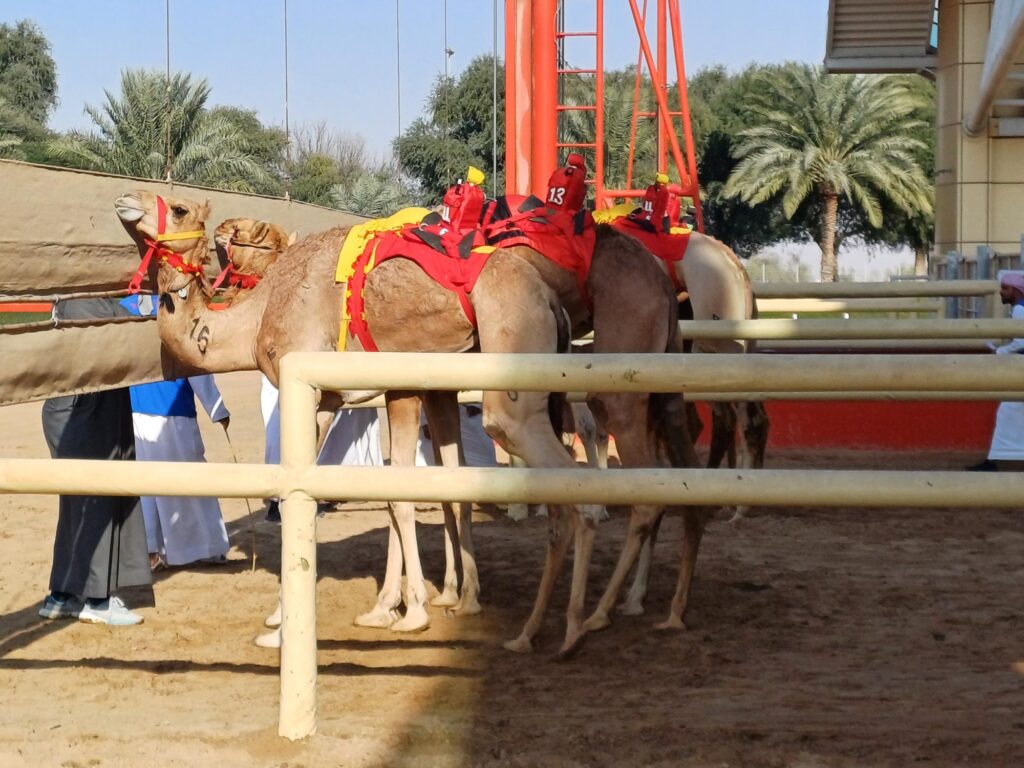
Apart from the race distances – we witnessed races of 6km and 8km long – there are also no longer any actual jockeys riding the camels. Instead there are robot jockeys that are controlled by someone driving in a vehicle alongside the racing track.
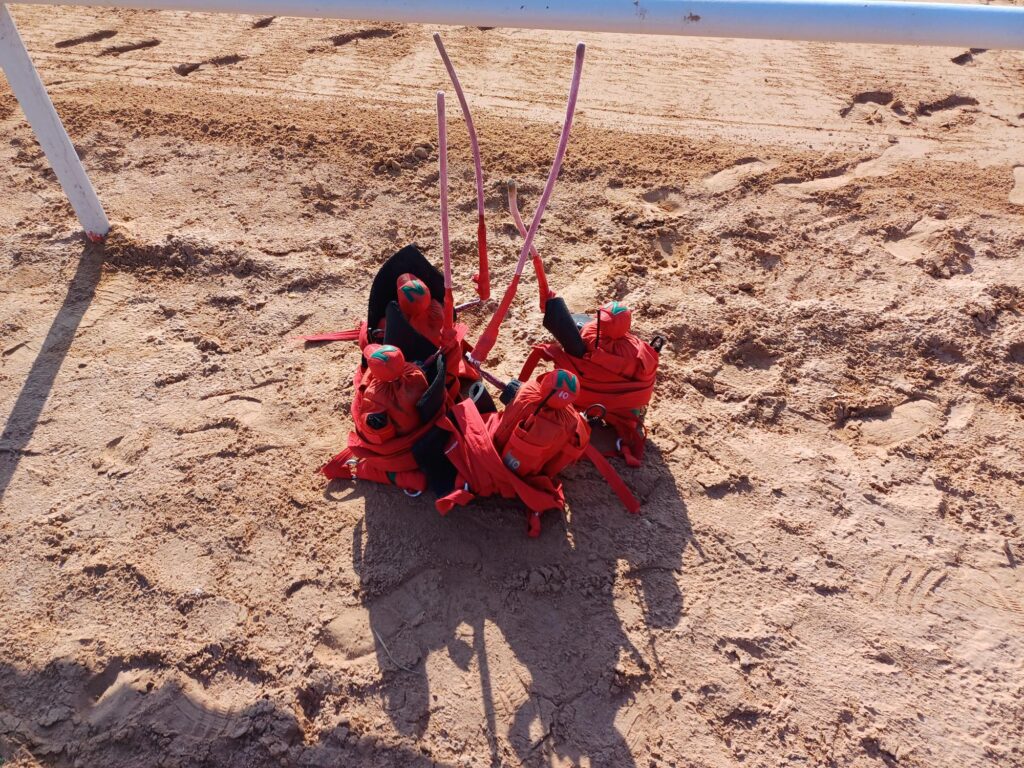
Robot Jockeys Replacing Human Jockeys
The robot jockeys have replaced human jockeys in Qatar and the UAE but are still a feature of camel racing in other countries where the sport is popular. Unfortunately, as with horse racing, the smaller and lighter the jockey, the better. For thousands of years small boys, as young as 4yrs old, have been used as jockeys.
This is obviously not a career path for anyone and of late international pressure aimed at stopping this practice has given rise to the development of the robotic jockey.
The development of these robot jockeys was challenging and quite fascinating and you can read more about that here.
A Race Track – But Not As You Know It
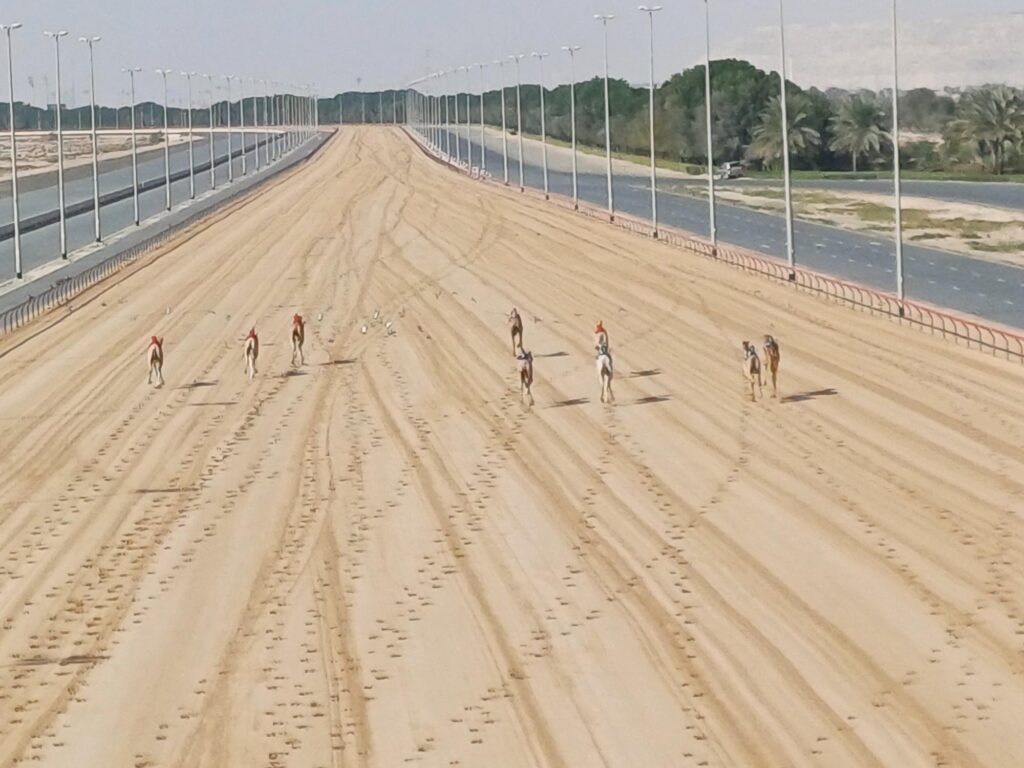
This is one impressive track. One of the interesting things about it is the tarred roads on either side of the actual race track.
On the left you will see a road bordering on the track but separated from the rest of the road by a low road while on the right of the track no such wall exists.
This road is used exclusively by the camera truck that follows the race and broadcasts the race to the spectators seated in the grandstands. This is because, at 8km long, no spectator can sit in one place on the track and watch the whole race from start to finish as you usually can do for horse racing.
The other part of the road and the road on the right of the track are where the cars drive that carry the people that control the robot jockeys.
On the day it looked like one car per camel which would make sense as it would be difficult to control 2 camels from one car if one was at the front of the race and the other at the back.
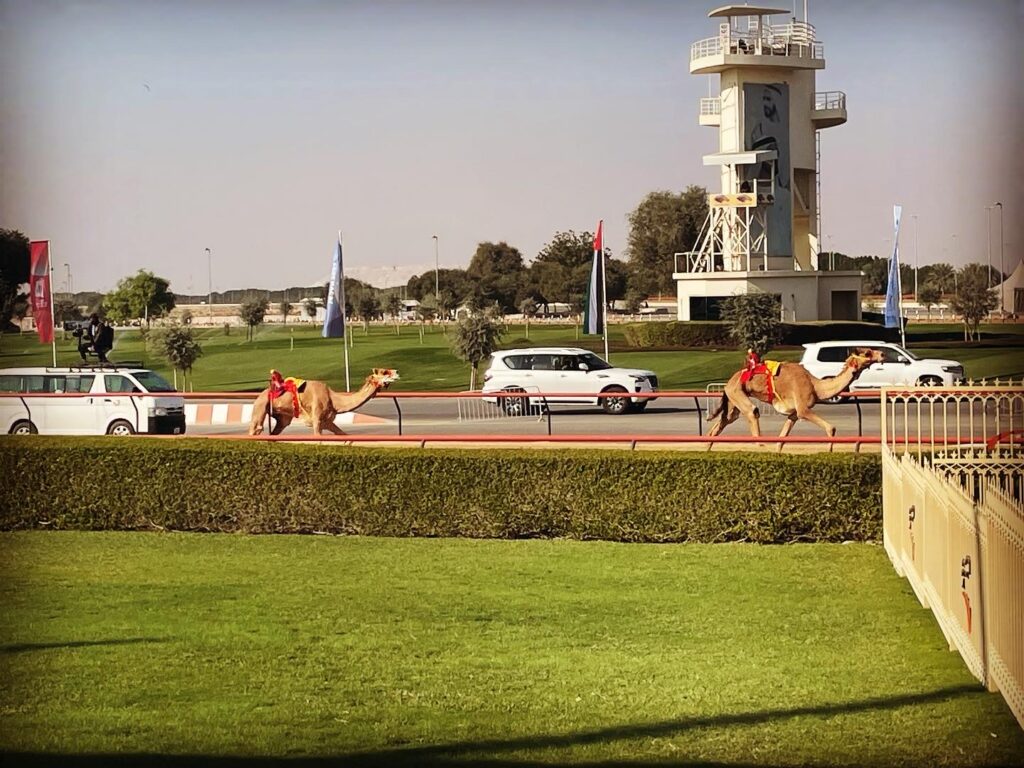
Money money money
While there is no betting on the racing (officially at least), some races attract serious prize money. There is also a big camel breeding industry associated with the racing and that can also generate big money a la the horse racing industry.
What we found really interesting was the presence of a camel hospital on site as well as an area for sampling. While not confirmed with anyone on the day, we can only assume that camels who have raced are also subjected to testing for performance enhancing drugs.
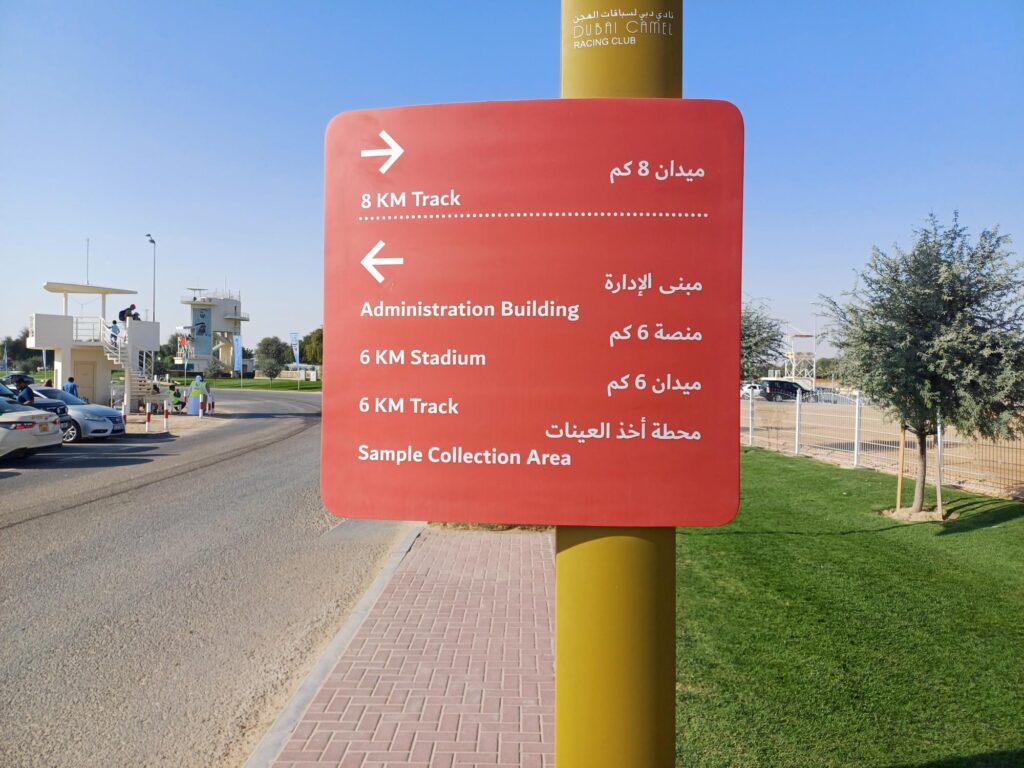
Camels Are Quick!
Most of us would not see camels as a particularly athletic animal. More of a slow trudge suited for negotiating the ups and downs of desert sand dunes.
How wrong could we be! What we found really surprising was the speed at which the camels raced. Amazingly they can sprint at up to 65km/hr for short distances which is about the same speed that a race horse can attain for about 20 secs.
However, the really impressive statistic is that they can maintain a speed of about 40km/hr for up to an hour! Which explains how they managed to cover the 6 or 8km race distances in minutes!
Unlike a horse race track, there were not massive grandstands along the finishing straight. Rather there seemed to be several smaller grandstands scattered around.
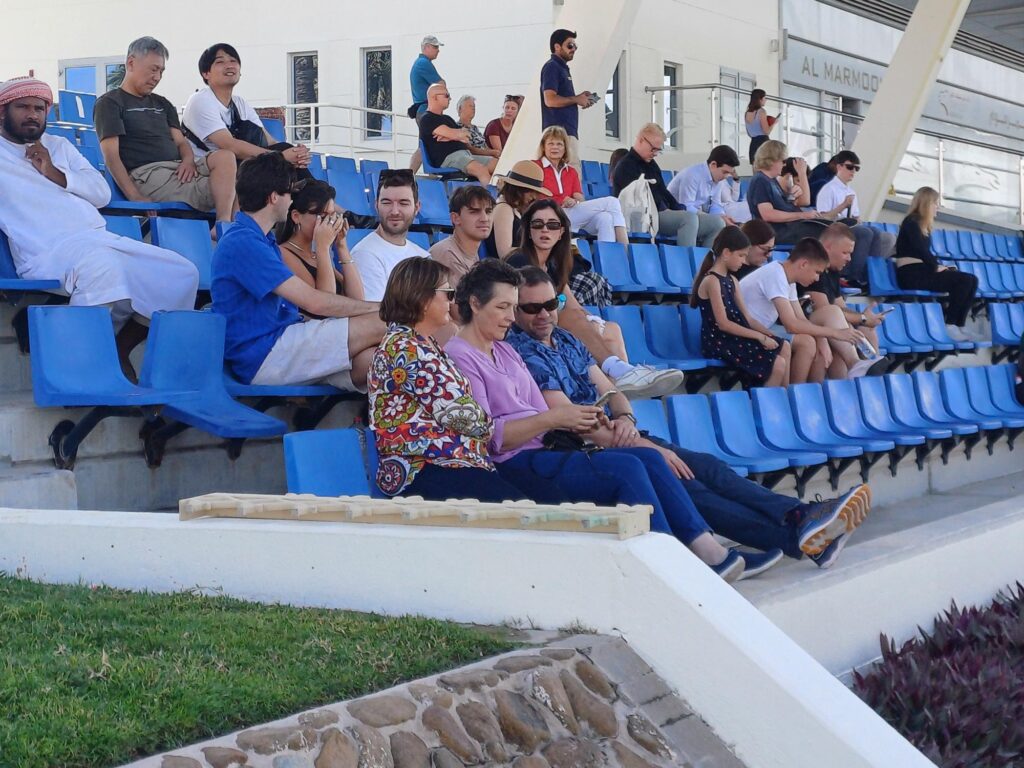
We thoroughly enjoyed our afternoon watching some camel racing. It was a relaxing and educational outing that we would recommend to anyone interested in a bit of a peek into the modern version of an age old tradition.
You can read about more of our travels here
